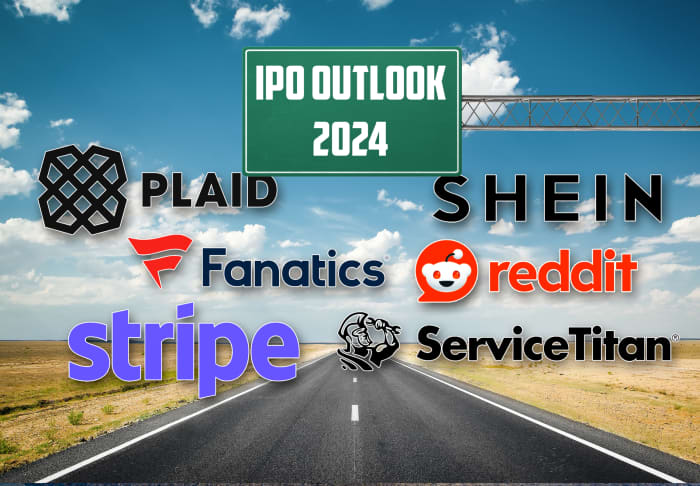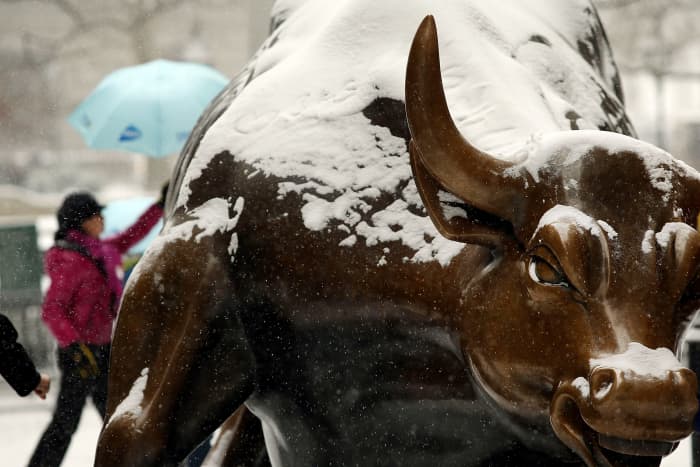This week the Securities and Exchange Commission decided to allow the launching of 11 spot bitcoin exchange-traded funds, while also issuing a warning to investors that “investments in crypto asset securities can be exceptionally volatile and speculative.”
In this week’s ETF Wrap column, Isabel Wang reports on which of the new bitcoin ETFs saw the highest inflows following the SEC’s decision, while also looking back at how well pioneering ETFs have performed over the years.
One major fund operator — Vanguard — has decided to stay away from running portfolios that hold bitcoin
BTCUSD,
which has led some customers to move their brokerage accounts to rival firms.
You might expect renewed interest in virtual currencies to bode well for Coinbase Global Inc.
COIN,
which pioneered individual accounts for investors to hold and trade virtual currencies. Then again, shares of Coinbase fell 7% on Thursday and were down another 7% on Friday. Tomi Kilgore explains what may be a “lose/lose” scenario for Coinbase.
More reaction to the SEC’s bitcoin decision:
- Mark Hulbert: Do bitcoin ETFs have a place in retirement portfolios?
- Bitcoin is a ‘public good,’ says ARK’s Cathie Wood as spot ETF debuts
Souring on Apple
Getty Images
Therese Poletti explains why investors seem to be shying away from Apple’s stock so far this year.
Read on: Why Microsoft’s stock is a better investment than Apple
Now what about Nvidia’s stock?
The above articles about Apple
AAPL,
and Microsoft Corp.
MSFT,
focus on valuations and fundamentals, but there is another way traders consider stocks — technical analysis of trading patterns and momentum. Tomi Kilgore looks at this week’s breakout for Nvidia Corp.
NVDA,
and then considers whether or not the stock has been overbought, according to its Relative Strength Index.
The Ratings Game: Disney’s stock has been stuck. Answering this question could get it going again.
A stock-market approach centered on a craze: Ozempic and other weight-loss drugs’ popularity set these stocks up for big gains
Social Security and planning for your retirement

Hopefully you will be in a position to decide when you want to begin receiving Social Security payments during your retirement.
Getty Images
Take a look at your Social Security estimate. You will probably see that your estimated benefits will increase by about 8% a year for each year you wait past the age of 62 to begin receiving the payments, until the age of 70. You may find that your payments will increase by about 84% if you wait until you are 70, over starting at the minimum age of 62.
And you might live for decades past the age of 70.
But there are always other factors to consider. Alessandra Malito writes the Help Me Retire column, and this week she has tips for a reader on how to go about making the decision about when to start taking Social Security.
More on Social Security and help with retirement planning and decisions:
Help with paying for college

University students will be all smiles once the arduous process of submitting the FAFSA has been completed.
Getty Images
If you are the parent of a college student or of a high-school senior planning to attend a university soon, you have to fill out the new Free Application for Federal Student Aid. The form has been simplified, but it has also been delayed: It is being rolled out this month, when normally it is available on Oct. 1.
Beth Pinsker explains how you or your child can appeal for more financial aid as part of this process. Many people don’t realize they can appeal and that doing so may be worthwhile.
More from Beth Pinsker: I bought I-bonds to pay for college for my nephew’s children. Should I move them to a 529 account?
A brighter scene for IPOs

Investment bankers expect the volume of initial public offerings to pick up this year after a difficult 2023.
MarketWatch photo illustration/iStockphoto
The volume of initial public offerings slowed to a crawl last year, but the prospect of declining inflation and lower interest rates may lead to much more action in 2024. Ciara Linnane and Emily Bary survey the recent IPO action and list a bunch of likely candidates for this year.
The new technology hub
This year’s Consumer Electronics Show is being held in Las Vegas. Jon Swartz interviewed executives who expect the migration of Silicon Valley tech companies to Las Vegas to transform what was formerly a casino paradise into a new tech hub.
Company news

Delta’s financial guidance led other airline stocks to tumble on Friday.
AFP via Getty Images
The “big four” U.S. banks kicked off fourth-quarter earnings season on Friday, and some of the news was dismal:
More earnings news:
Dow at 100,000 is a reasonable expectation

James Demmert of Main Street Research expects the Dow Jones Industrial Average to climb to 100,000 within 10 years.
Getty Images
The Dow Jones Industrial Average
DJIA
closed at 37,592.98 on Friday. James Demmert, chief investment officer at Main Street Research, believes the Dow could rise to 100,000 within seven to 10 years as artificial-intelligence technology is rolled out.
Leaving the effect of AI aside, that 100,000 is not an outlandish level for the Dow, in light of history. If the Dow were to rise from its current level to 100,000 in 10 years, the compound annual return would be 10.3% Over the past 10 years, the Dow’s total return (with dividends reinvested) has been 128.7%, for a compound annual return of 11.2%, according to FactSet.
Hitting 100,000 in seven years — the lower part of Demmert’s range — would be a taller order, but the compound annual return under that scenario would be 15%.
More market news and views:
- This closely watched recession signal is shifting for reasons unrelated to economic-growth prospects, strategist says
- ‘Goldilocks thinking’ can set stock-market investors up for losses: Howard Marks
A garden of thorns for our friend the Moneyist

Quentin Fottrell is the Moneyist.
MarketWatch illustration
Quentin Fottrell writes the Moneyist column, through which he helps readers work through tough financial decisions and conflicts:
Want more from MarketWatch? Sign up for this and other newsletters to get the latest news and advice on personal finance and investing.








